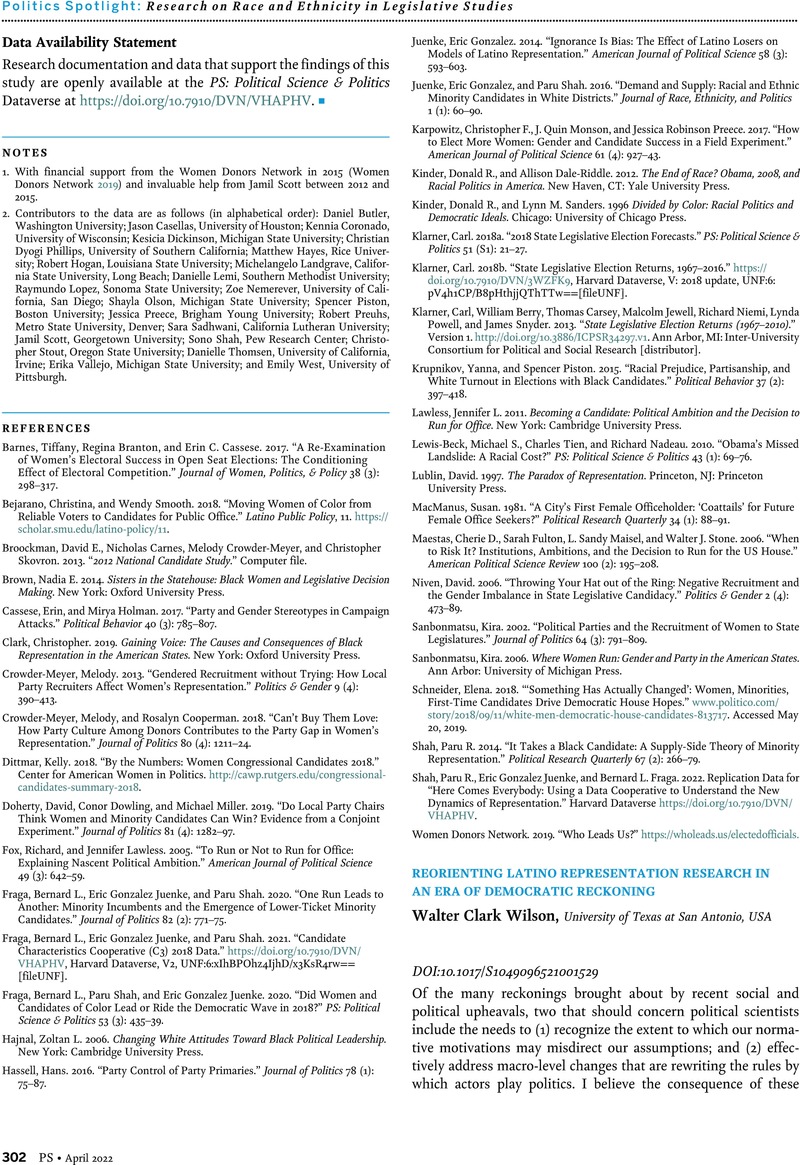No CrossRef data available.
Article contents
Reorienting Latino Representation Research in an Era of Democratic Reckoning
Published online by Cambridge University Press: 31 March 2022
Abstract

- Type
- Research on Race and Ethnicity in Legislative Studies
- Information
- Copyright
- © The Author(s), 2022. Published by Cambridge University Press on behalf of the American Political Science Association


